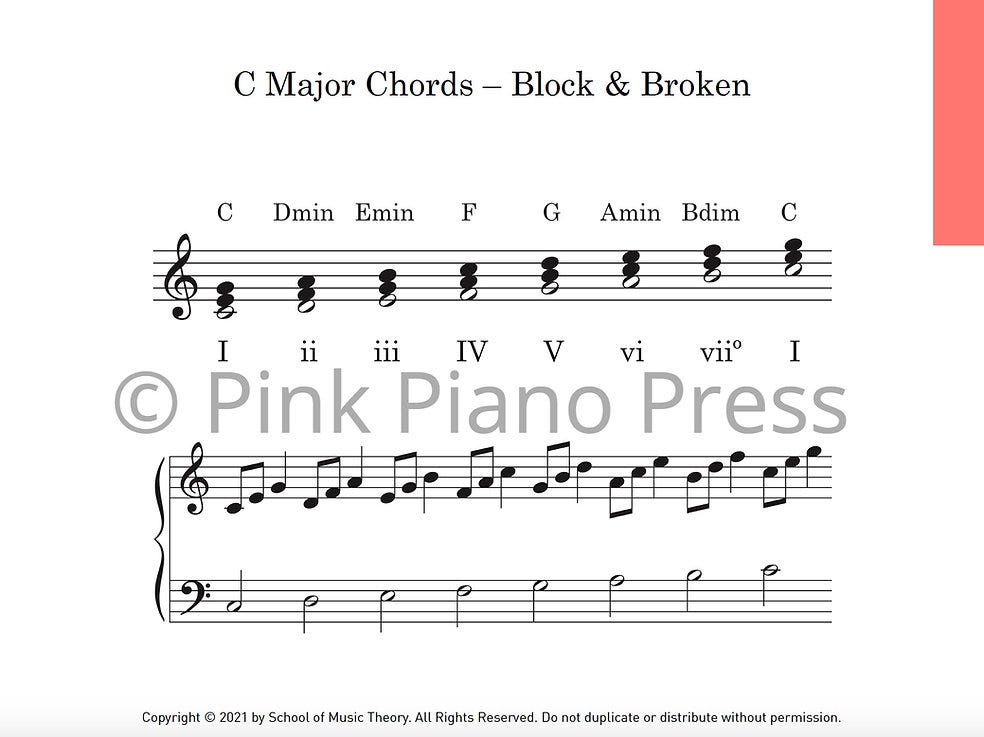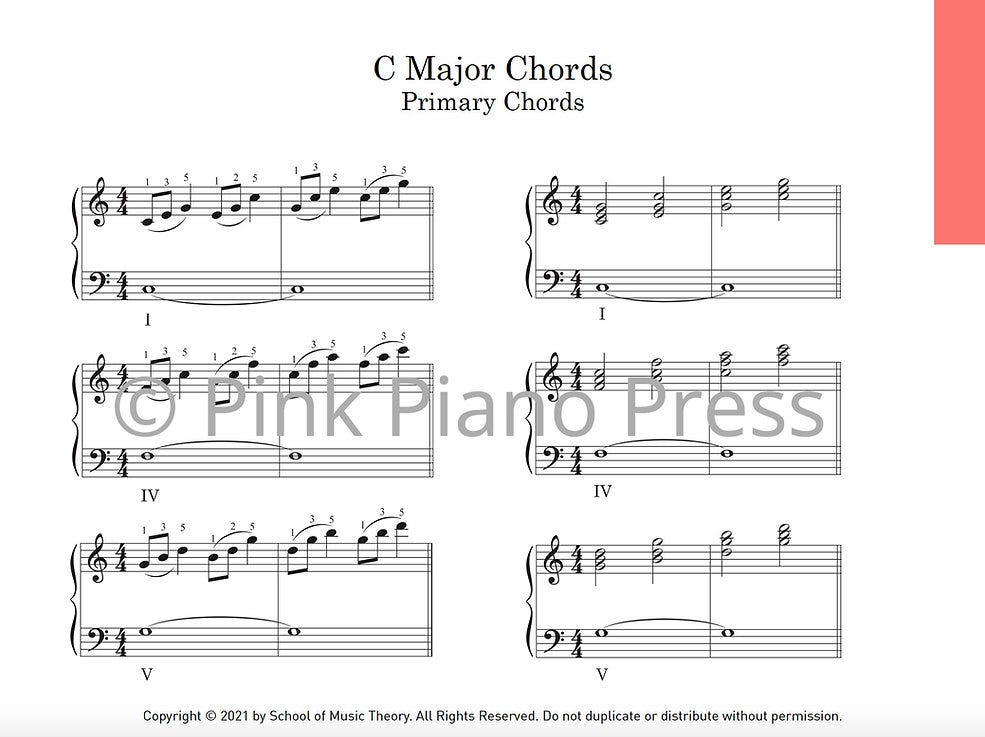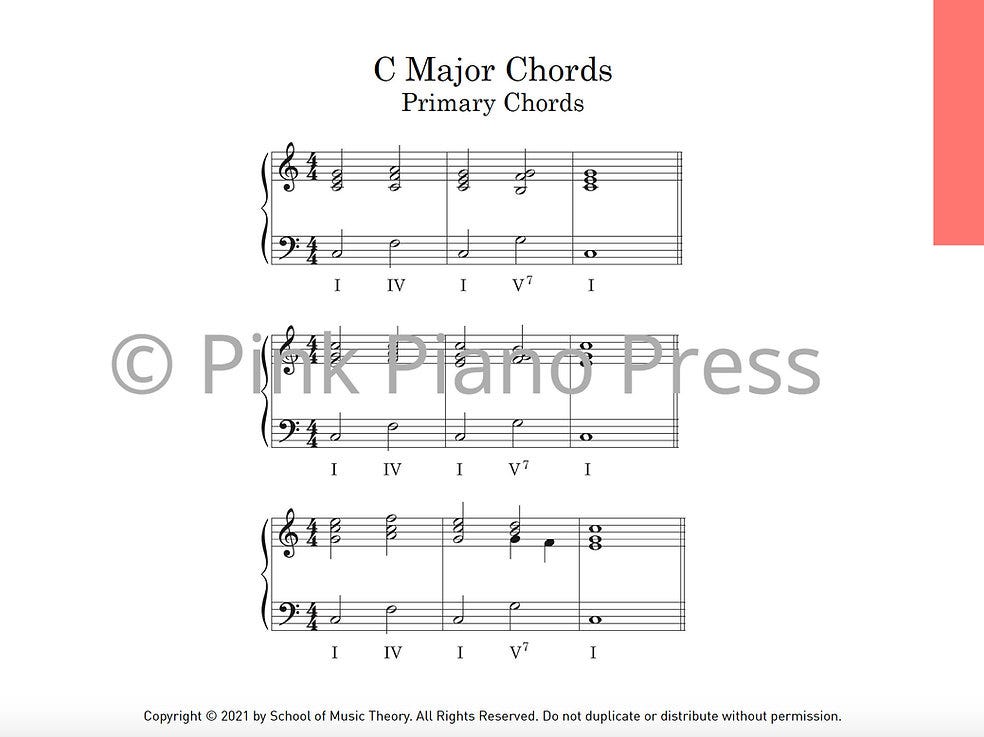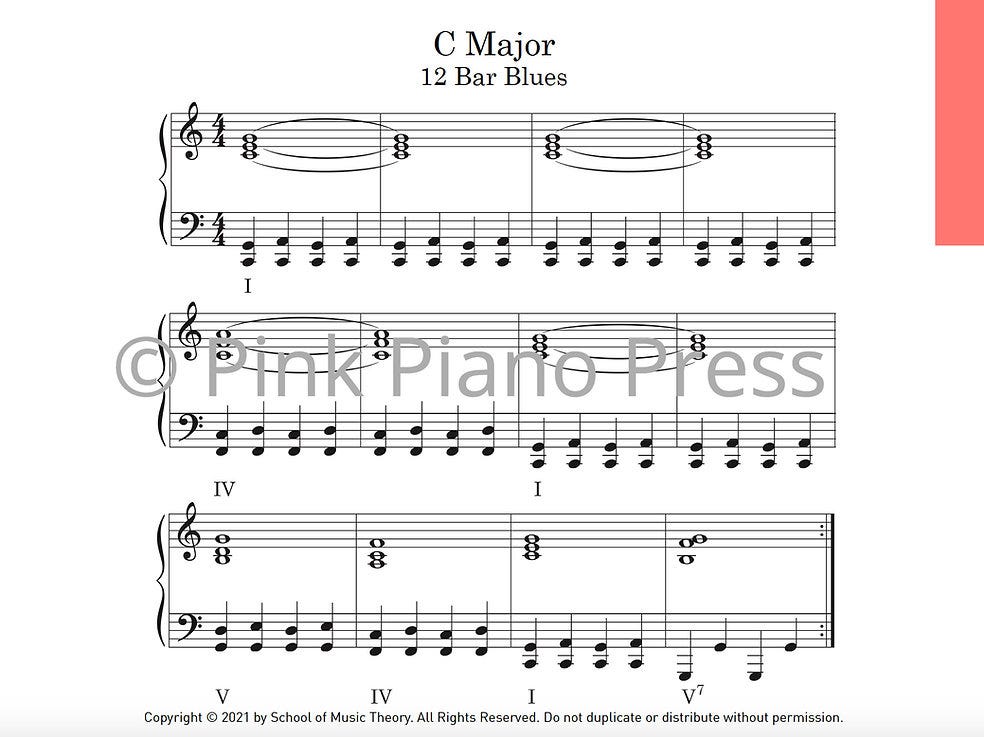The Ultimate Chord Workout Book for Piano Players
Lona Kozik‘s wonderful resource will transform your students‘ understanding
I’m sure you’ve experienced how when piano students understand chords, their playing dramatically improves.
They sight-read more fluently, move between chord positions more swiftly, and develop a deeper understanding of how music affects us so profoundly.
Understanding chords is such a transformative insight, but many of the commonly used theory books are full of technical jargon that often hinders understanding. My colleague Ruth Alberici and I wanted to change this, so we wrote our Piano Chords in All Major and Minor Keys workbook, which was shortlisted for the 2025 Art of Piano Education Awards.
Over 214 pages we show students all the chord positions for all 24 keys in easy-to-understand keyboard diagrams, and give useful guides to voice-leading, chord construction, and harmonic functions.
But even that massive book doesn‘t cover all aspects of practical keyboard harmony. That’s why I was delighted to find that Lona Kozik has published a wonderful book called The Ultimate Chord Workout Book for Piano Players.
A brief aside: creativity mentoring
There are just a couple of creativity mentoring slots available before the end of the term. Book yours here:
It’s brilliant!
I’ve been testing it out in my studio this week and it’s brilliant. I’m excited to tell you all about it!
Whereas Ruth and my book focuses on helping students to quickly visualise and play chords, Lona’s helps students to experience diatonic harmony by playing it at the piano.
The exercises begin simply, just like in our Piano Chords in All Major and Minor Keys workbook: the student plays all the root position chords of the key.
Then the exercises take a completely different direction
First, the student plays an exercise that cycles through each of those chords, moving through the diatonic circle of fifths (e.g. C, F, Bdim, Em, Am, Dm, G, C in the key of C major).
Next the student plays through each of the Primary Chords of the key in all three inversions, which is familiar territory from our Piano Chords in All Major and Minor Keys workbook.
Then the student plays the primary chords in a I-IV-I-V7-I sequence with perfect voice leading.
Next the student plays the primary chords in the 12-bar blues sequence.
Finally the student plays the chord sequence from Pachelbel’s Canon.
Over the course of 214 pages, the student can work through all 24 major and minor keys, experiencing the same diatonic harmony in all keys.
Compliments and complements
Sincere compliments to Lona Kozik for writing such a useful resource.
Once a student has played through these exercises, they have experienced diatonic harmony at the keyboard in a profound way: they’ve felt it in their hands, heard it with their ears, and—with your assistance—they will also understand how it works on an intellectual level.
When used in combination with Ruth and my Piano Chords in All Major and Minor Keys, the student will be able to visualise and quickly play these exercises in any key, regardless of their sight-reading ability, and the various appendices of our book help them understand the theory of diatonic harmony by explaining it in plain English. As such the two books complement each other really well.
How to use it
Whenever you‘re introducing a student to a new key, give them the relevant section from both Ruth and my Piano Chords in All Major and Minor Keys and Lona’s Ultimate Chord Workout Book.
First, show them the root position chord diagrams page from Piano Chords in All Major and Minor Keys and get them to play each of the chords.
Next, get them to play through Lona’s Circle of Fifths exercise.
Now play through Lona’s Primary Chord Inversions exercise.
Then explore the inversions diagrams in Piano Chords in All Major and Minor Keys.
Next, play through Lona’s Primary Chord Progressions exercise (the one that does I-IV-I-V7-I)
If you now want to start exploring 7th chords, use the 7th chord diagrams page from Piano Chords in All Major and Minor Keys.
Depending on the genre of the piece you’re teaching, play through either Lona’s 12 Bar Blues exercise or Pachelbel’s Canon exercise.
Once your student has completed all this, they’ll have a profound understanding of how chords look, feel and sound in the key they’re working in.
Get your hands on it!
The Ultimate Chord Workout Book for Piano Players is self-published on Lona’s Pink Piano Press, where you can also find her compositions (she’s a very accomplished composer) and other theory resources.
It is a 214 page ebook, perfect for digital studios, and it prints beautifully.
More about Lona Kozik
Lona is a teacher and composer originally from the US but based in Totnes in southern England. After establishing herself in the UK academic scene by teaching at various universities, she founded both the Totnes School of Piano (2012) and School of Music Theory (2019).
I interviewed for this site earlier this year. She’s fascinating and very likeable, and her answers are really insightful.













